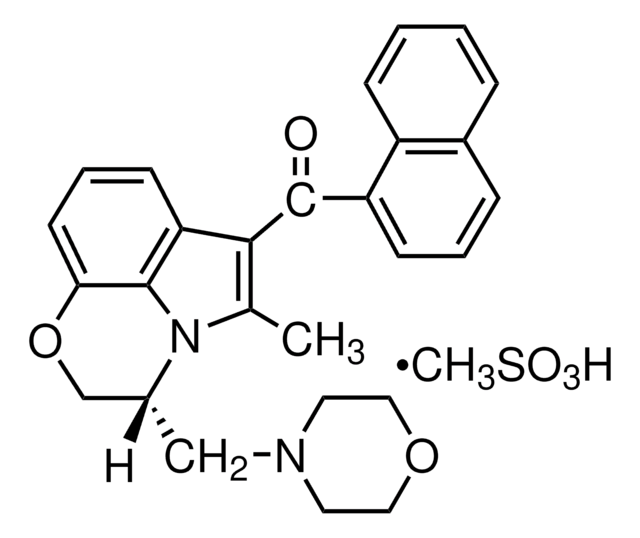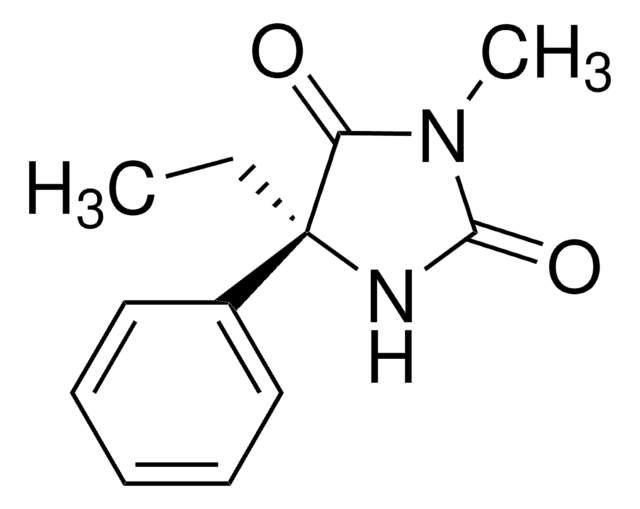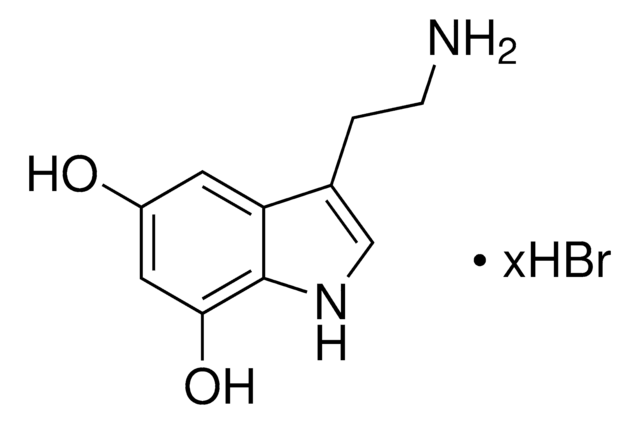M8750
(+)-Methamphetamine hydrochloride
Synonyme(s) :
d-Desoxyephedrine hydrochloride, d-N,α-Dimethylphenethylamine hydrochloride, Methylamphetamine hydrochloride
About This Item
Produits recommandés
Contrôle du médicament
USDEA Schedule II; Home Office Schedule 2; stupéfiant (France); kontrollierte Droge in Deutschland; regulated under CDSA - not available from Sigma-Aldrich Canada; psicótropo (Spain); Decreto Lei 15/93: Tabela IIB (Portugal)
Technique(s)
HPLC: suitable
gas chromatography (GC): suitable
Solubilité
H2O: soluble
ethanol: soluble
Application(s)
forensics and toxicology
pharmaceutical (small molecule)
veterinary
Auteur
Teva
Chaîne SMILES
Cl[H].CN[C@@H](C)Cc1ccccc1
InChI
1S/C10H15N.ClH/c1-9(11-2)8-10-6-4-3-5-7-10;/h3-7,9,11H,8H2,1-2H3;1H/t9-;/m0./s1
Clé InChI
TWXDDNPPQUTEOV-FVGYRXGTSA-N
Informations sur le gène
human ... SLC6A2(6530) , SLC6A3(6531) , SLC6A4(6532)
Vous recherchez des produits similaires ? Visite Guide de comparaison des produits
Actions biochimiques/physiologiques
Caractéristiques et avantages
Mention d'avertissement
Danger
Mentions de danger
Conseils de prudence
Classification des risques
Acute Tox. 2 Oral - STOT SE 3
Organes cibles
Central nervous system
Code de la classe de stockage
6.1A - Combustible acute toxic Cat. 1 and 2 / very toxic hazardous materials
Classe de danger pour l'eau (WGK)
WGK 3
Point d'éclair (°F)
Not applicable
Point d'éclair (°C)
Not applicable
Équipement de protection individuelle
Eyeshields, Faceshields, Gloves, type P2 (EN 143) respirator cartridges
Certificats d'analyse (COA)
Recherchez un Certificats d'analyse (COA) en saisissant le numéro de lot du produit. Les numéros de lot figurent sur l'étiquette du produit après les mots "Lot" ou "Batch".
Déjà en possession de ce produit ?
Retrouvez la documentation relative aux produits que vous avez récemment achetés dans la Bibliothèque de documents.
Notre équipe de scientifiques dispose d'une expérience dans tous les secteurs de la recherche, notamment en sciences de la vie, science des matériaux, synthèse chimique, chromatographie, analyse et dans de nombreux autres domaines..
Contacter notre Service technique









